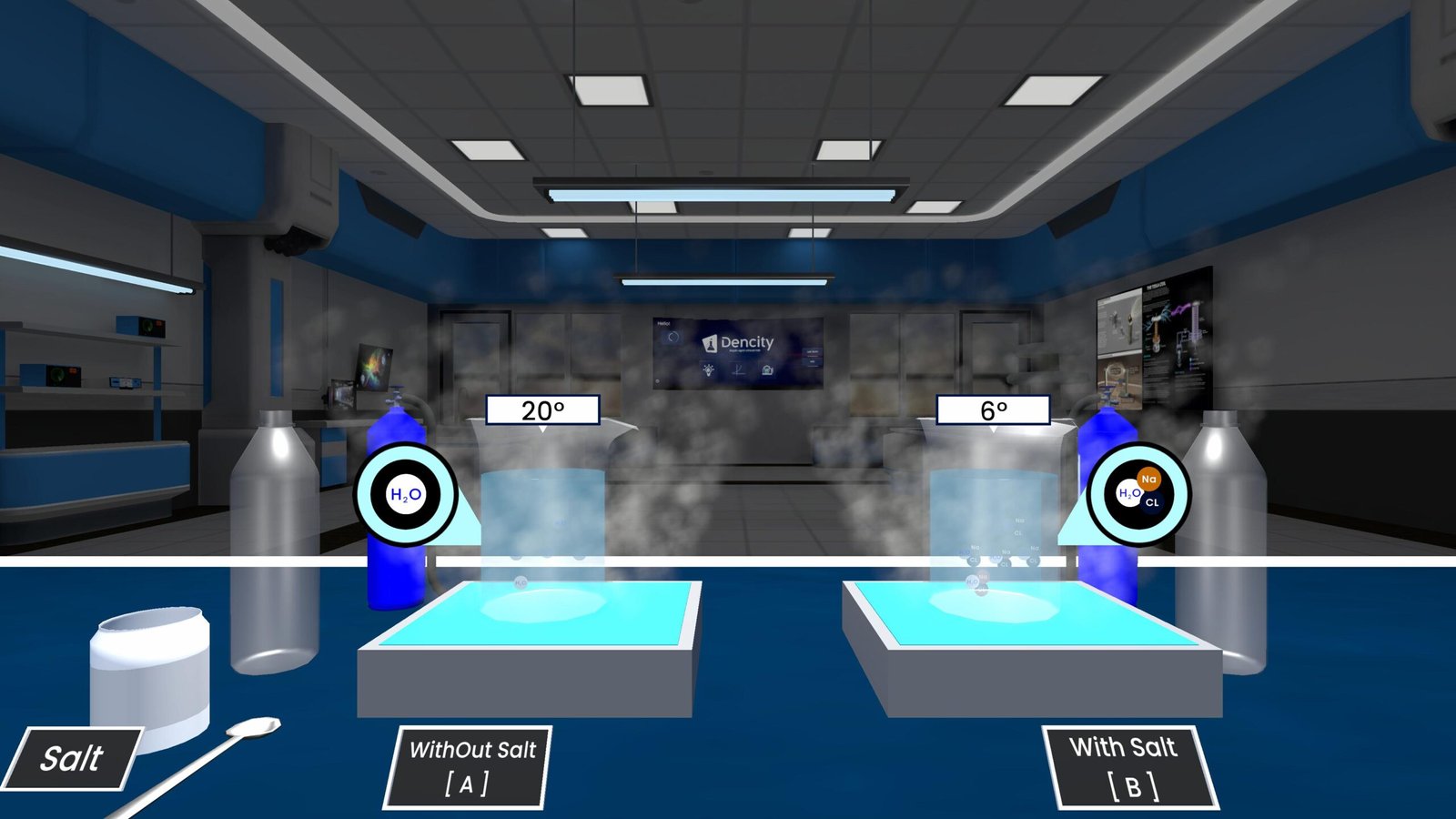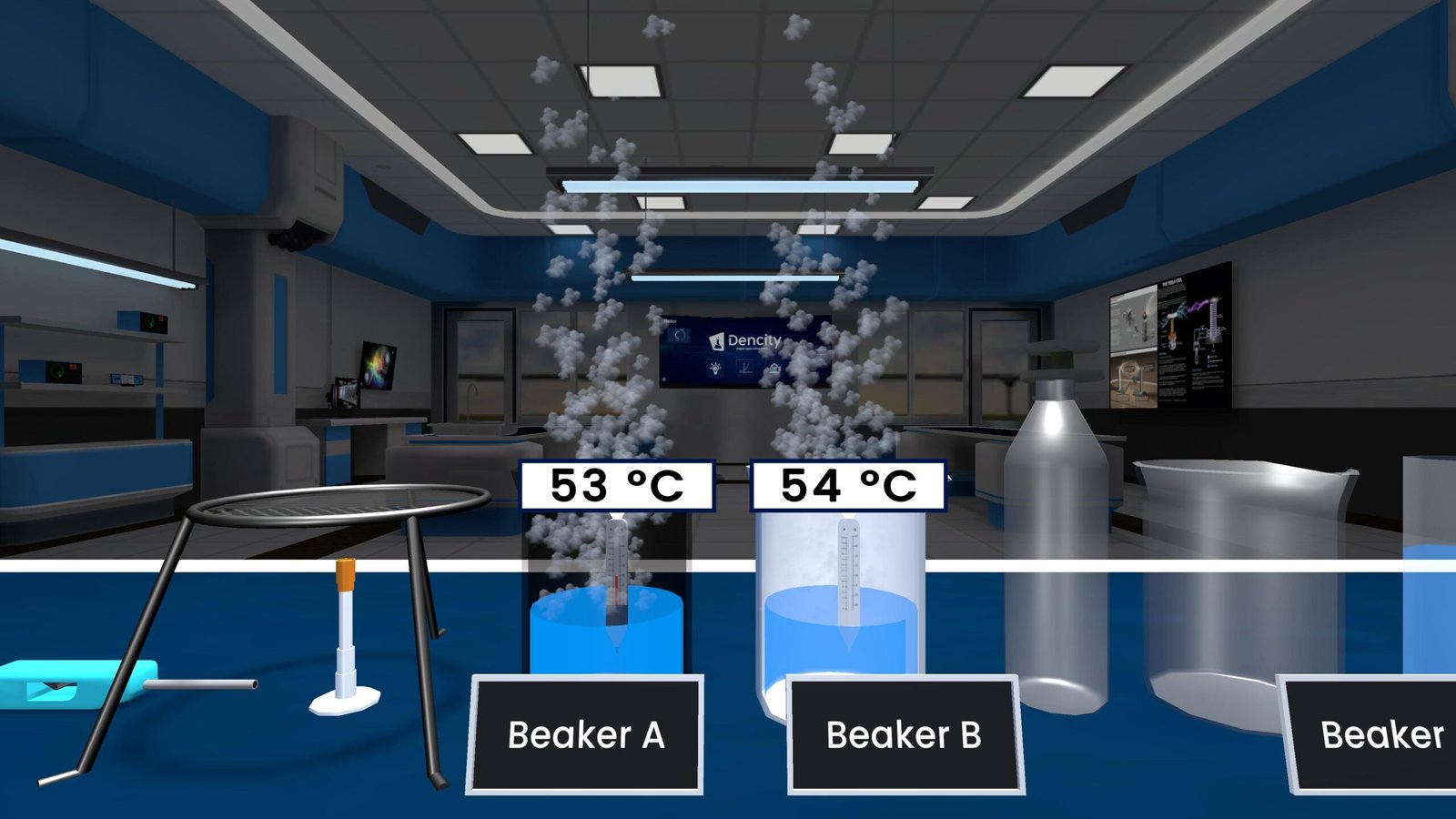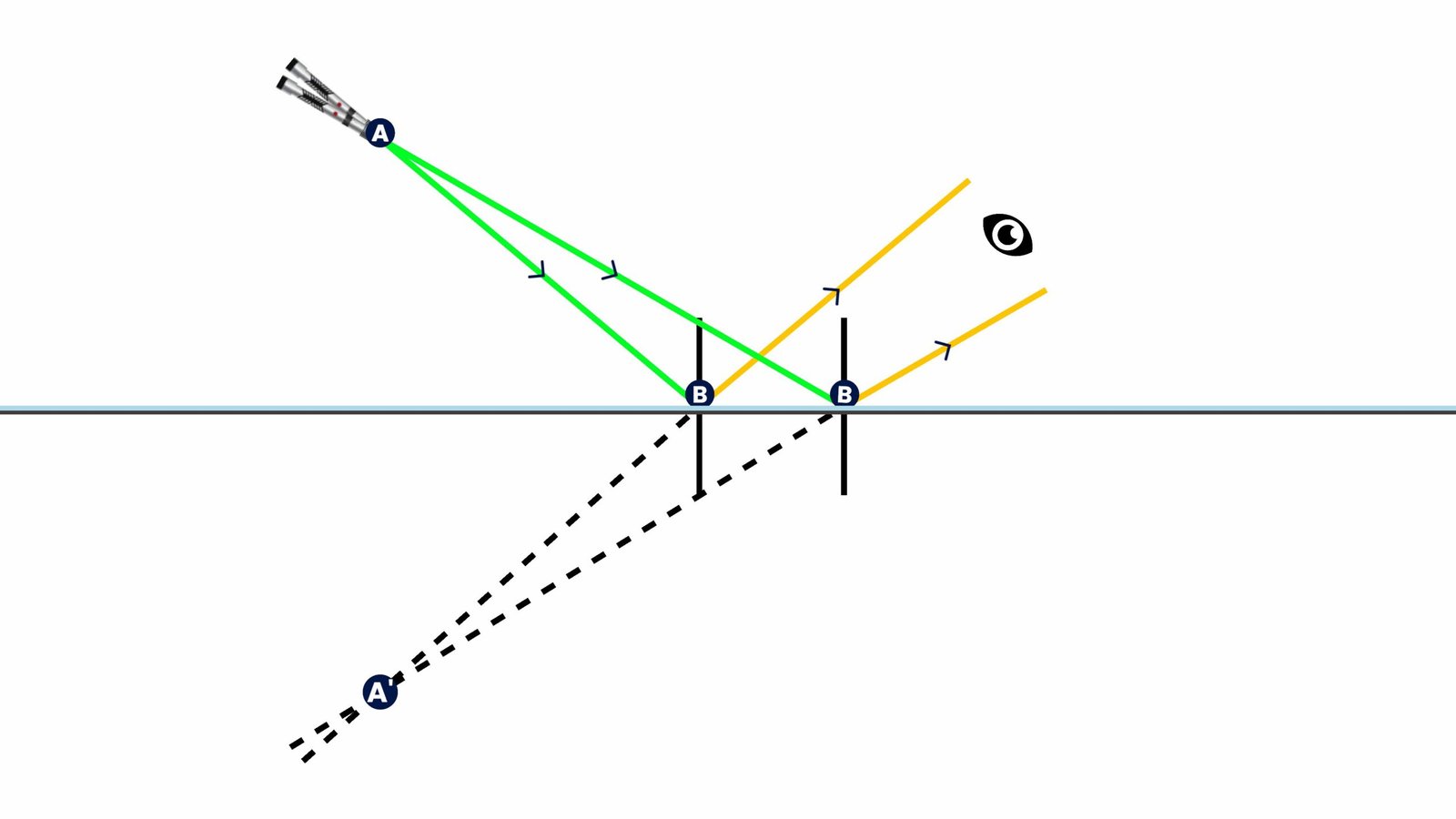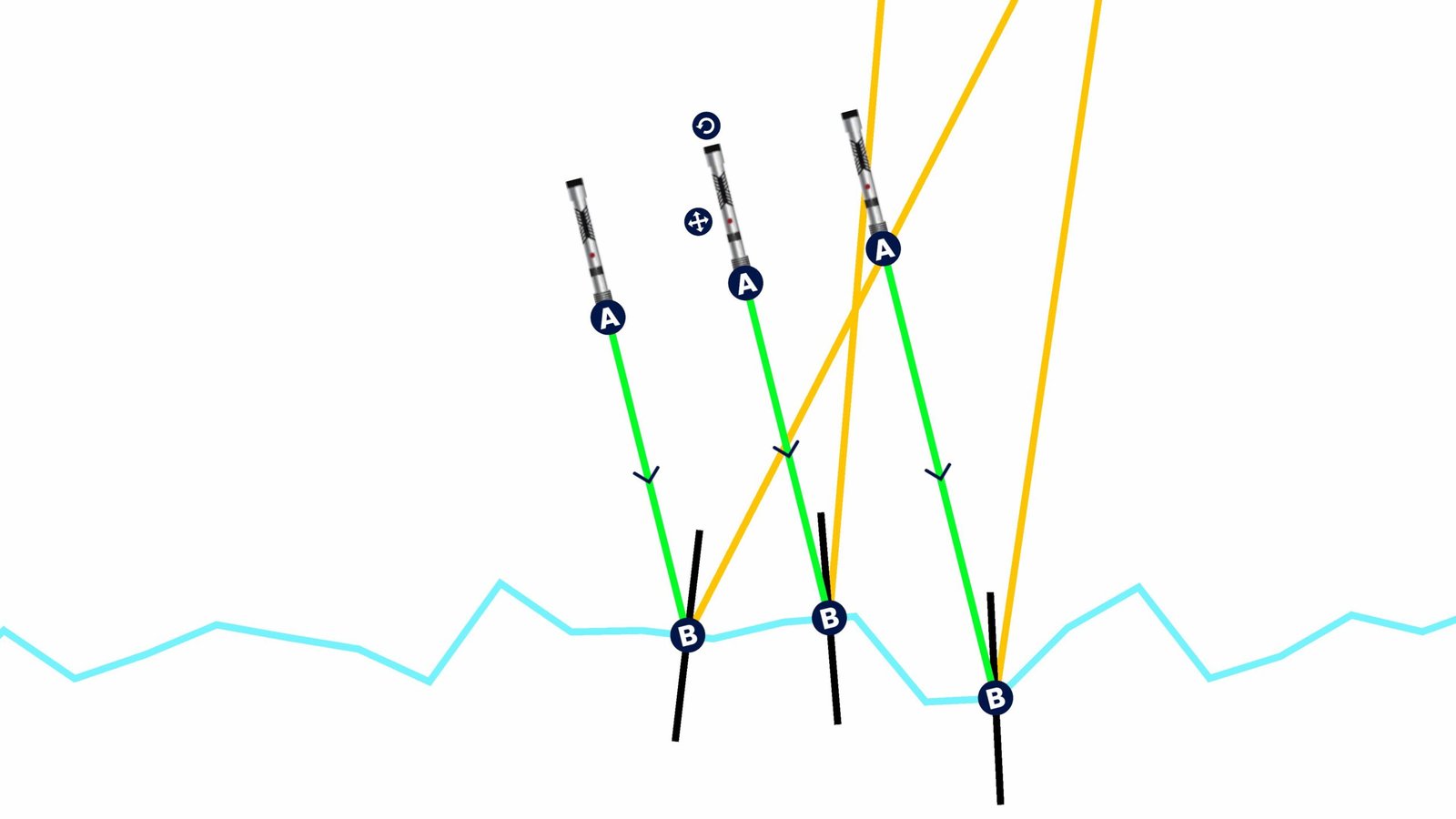Depression in Freezing Point Experiment – Class 12 Science
Depression in freezing point is a colligative property of solutions. It means that when a non-volatile solute is added to a solvent, the freezing point of the solvent decreases. In simple words, the solution will freeze at a lower temperature than pure solvent. This happens because solute particles interfere with the formation of a solid crystal structure of the solvent, making it more difficult to freeze.
Theory
When a solute is dissolved in a solvent, the chemical potential of the solvent decreases. As a result, the solution must be cooled further to reach the point where it can solidify.
The extent of freezing point depression is proportional to the molal concentration of the solute. Mathematically, it is given by:
ΔTf = Kf × m
Here:
- ΔTf = Depression in freezing point
- Kf = Cryoscopic constant of the solvent
- m = Molality of the solution
This property depends only on the number of solute particles and not on their type. That is why it is called a colligative property.
Real-Life Applications
- Salt on icy roads – prevents water from freezing, making roads safer.
- Antifreeze in car radiators – prevents water from freezing in cold climates.
- Biological preservation – glycerol protects cells and tissues from freezing damage.
- Ice cream preparation – adding salt to ice lowers its temperature, helping ice cream freeze faster.
Observations
- Pure water freezes at 0°C.
- A salt solution freezes at a lower temperature, e.g., -2°C.
- This demonstrates the effect of solute particles on lowering the freezing point.
| Beaker Type | Final Temperature |
|---|---|
| Pure Water | 0°C |
| Salt Solution | -2°C |
Learning with Dencity
With the Dencity virtual lab, students can perform the Depression in Freezing Point experiment in a safe and cost-effective way. Instead of handling chemicals in a real lab, you can simulate the experiment on your phone, tablet, or computer. Dencity provides:
- Real-time calculations with step-by-step solutions.
- Interactive learning with adjustable variables.
- A virtual science lab where experiments are safe and repeatable.
- Support for class 12 science experiments, helping students prepare for exams effectively.
Dencity for Teachers
Dencity is not only for students but also a powerful tool for teachers. With our platform, teachers can:
- Conduct interactive teaching with live experiments.
- Create virtual classrooms and assign experiments.
- Get automatic reports on student performance.
- Use touch panel boards in classrooms for smooth, interactive demonstrations.
This makes teaching freezing point depression and other topics engaging and efficient.
Works Perfectly on Interactive Panels
The Dencity app works seamlessly on interactive touch panels in smart classrooms. Teachers can adjust experiment variables on the panel and show real-time results to the entire class.
Contact for Demo or Pricing
If you are an educational institution, contact us for customized pricing or to schedule a demo session of the Dencity virtual science lab.
Frequently Asked Questions (FAQs)
- What is depression in freezing point?
It is the lowering of the freezing point of a solvent when a solute is added. - Why does adding salt lower the freezing point of water?
Salt particles disrupt the water molecules’ ability to form ice crystals, so water freezes at a lower temperature. - Is freezing point depression a colligative property?
Yes, because it depends only on the number of solute particles, not their type. - What is the formula for freezing point depression?
ΔTf = Kf × m - What does Kf represent?
Kf is the cryoscopic constant, which is unique for every solvent. - Can freezing point depression be observed in daily life?
Yes, examples include salted roads in winter and antifreeze in car engines. - Why is glycerol added to biological samples?
It prevents damage by lowering the freezing point, avoiding ice crystal formation. - What is the final temperature of salt solution compared to pure water?
Pure water freezes at 0°C, while salt solution may freeze around -2°C or lower. - Which class is this experiment taught in?
This is a Class 12 Science experiment. - How does Dencity help with this experiment?
Dencity provides a virtual science lab where you can perform the experiment safely, with step-by-step solutions, interactive simulations, and real-time feedback.
Explore science in a whole new way with the Dencity virtual lab – where learning is interactive, fun, and just a click away.







